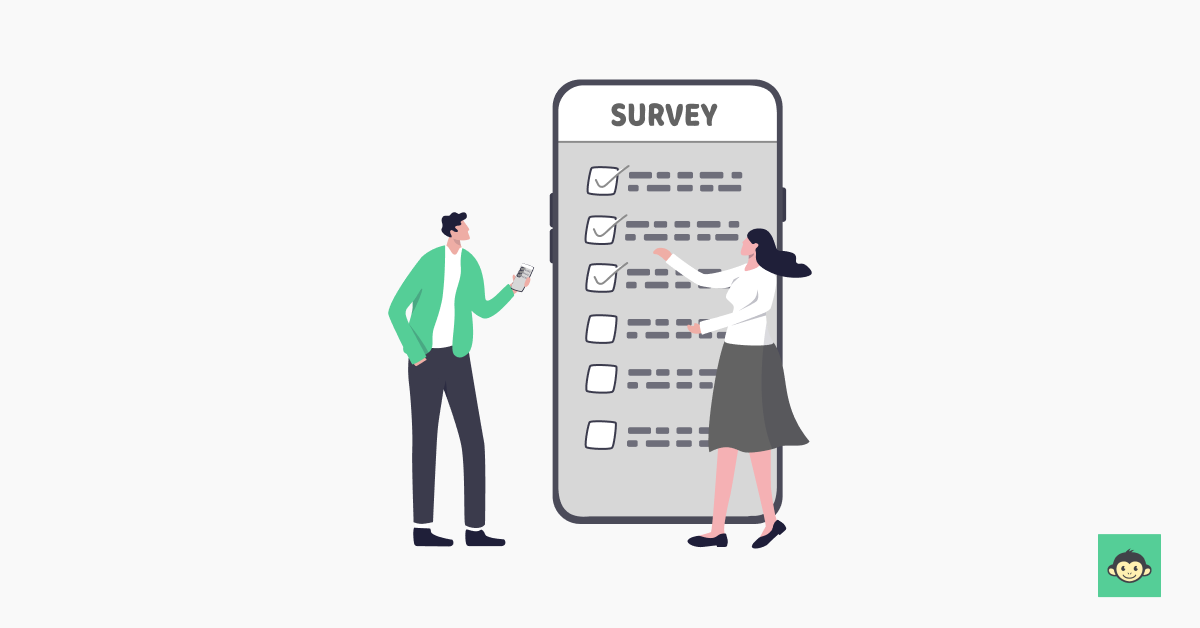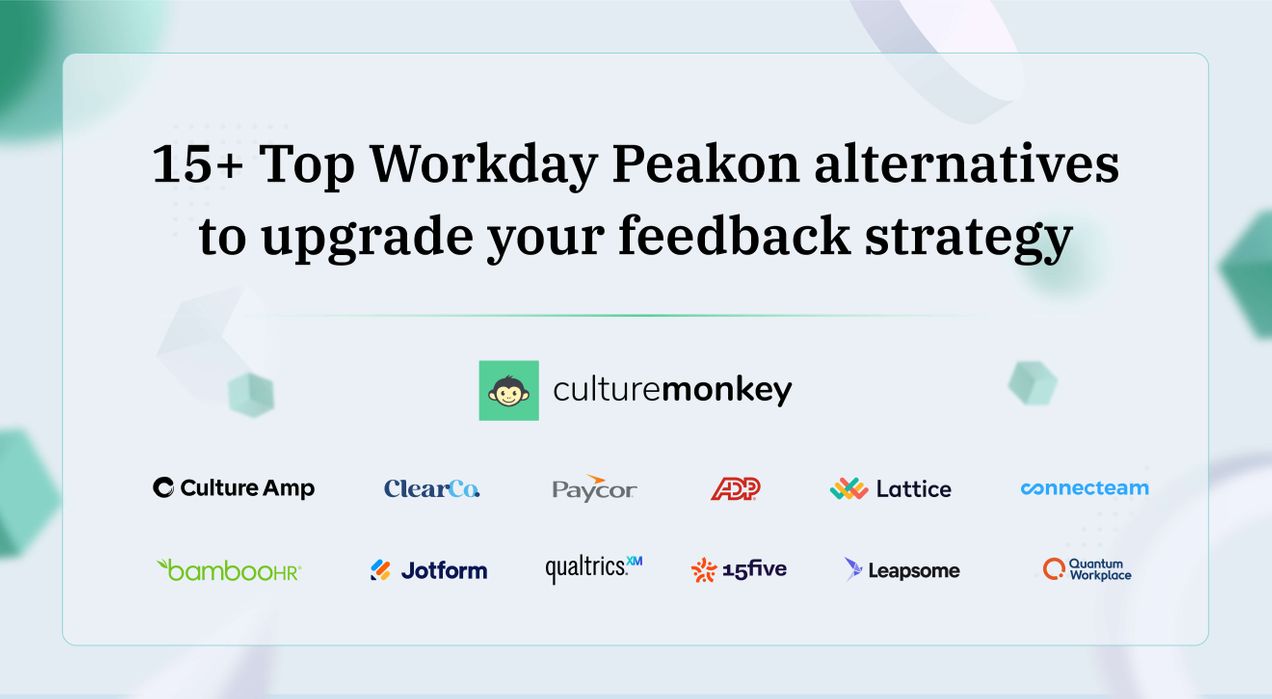How to communicate employee engagement survey results: 10 Effective tips for leaders in 2024

Picture this: you've just gotten the results back from your big employee engagement survey. Numbers flash before your eyes, charts spin, and a cold sweat prickles your brow. "What if they hate the coffee?!" Fear not, valiant leader! Deciphering and delivering survey results to the executive team doesn't have to be a nerve-wracking experience.
In the fast-paced, feedback-hungry world of 2024, transparent communication about employee engagement is key. It's the bridge between understanding your workforce and building a thriving company culture. But simply tossing out data points like confetti at a carnival won't do. We need a more strategic, "jazz hands, not finger pointing" approach.
This article is your roadmap to becoming a communication ninja. We'll explore 10 effective tips and best practices to help you transform survey results and company scores into actionable insights that will leave your employees feeling heard, valued, and ready to conquer the world (or at least that next big project).
So, grab your metaphorical microphone, put on your best "we're in this together" face and let's get ready to make those engagement scores sing!
What are employee survey results?

Employee survey results are the collected data and insights derived from questionnaires distributed to employees within an organization. These surveys typically aim to gauge various aspects of the workplace environment, employee satisfaction, engagement levels, and overall morale.
The results provide a snapshot of how employees perceive their roles, management, company culture, and other critical areas such as communication effectiveness, opportunities for career development, and work-life balance.
When properly analyzed, these results can reveal patterns and trends that help management identify strengths and areas needing improvement within the organization.
For instance, high scores in job satisfaction might indicate effective leadership and a positive work environment, whereas low scores could signal issues like inadequate compensation, poor management practices, or a lack of growth opportunities.
By understanding these nuances, companies can develop targeted strategies to address concerns, enhance employee well-being, and foster a more supportive and productive workplace.
Employee survey results serve as a valuable feedback mechanism, promoting a culture of transparency and open communication. They empower employees by giving them a voice and demonstrating that their opinions are valued.
Leveraging these insights helps in aligning organizational policies with employee needs, thereby boosting retention rates, enhancing performance, and contributing to the overall success of the business.
Why do employee engagement survey results matter?
Employee engagement survey results matter because they provide critical insights into the emotional and professional connection employees have with their organization. High levels of engagement are linked to numerous positive outcomes, including increased productivity, higher retention rates, and improved overall performance.
By understanding the engagement levels within the workforce, management can identify what drives motivation and commitment among employees and what might be causing disengagement.
These survey results help organizations pinpoint specific areas where they can improve, such as leadership effectiveness, recognition and rewards systems, career development opportunities, and work-life balance.
For example, if survey results indicate that employees feel undervalued or lack opportunities for growth, the organization can take targeted actions to enhance recognition programs and ongoing initiatives or provide more professional development resources.
Engaged employees are more likely to be advocates for the company, contributing to a positive organizational culture and a stronger brand reputation.
They tend to be more innovative and willing to go the extra mile, which can lead to better customer service and higher profitability. On the other hand, disengaged employees can negatively impact team morale and productivity, leading to higher absenteeism and turnover rates.
Why should you develop a survey process communication plan?

Developing a survey process communication plan is crucial for ensuring the success and effectiveness of any survey initiative within an organization. Firstly, clear communication helps in setting expectations and gaining buy-in from employees.
By outlining the purpose, objectives, and timeline of the survey, employees understand its significance and are more likely to participate actively.
A well-developed communication plan fosters transparency and trust, demonstrating that the organization values employee input and is committed to using survey feedback to drive positive changes.
A communication plan helps in maximizing survey participation rates. By utilizing various communication channels such as emails, newsletters, intranet announcements, and posters, organizations can reach a wider audience and ensure that employees are aware of the survey and its importance.
Effective communication also extends to sharing survey results and subsequent action plans. By communicating survey results and findings transparently and sharing the organization's plans for addressing issues raised, employees feel heard and valued.
This fosters a sense of ownership and accountability among employees, motivating them to actively engage in the improvement process.
A survey process communication plan is essential for maximizing participation, promoting transparency, and fostering a culture of continuous improvement within an organization.
It ensures that surveys are not just seen as a checkbox exercise but as a meaningful tool for driving positive change and enhancing employee satisfaction and engagement.
How do you communicate the results of employee surveys to your employees?
Communicating the results of employee surveys to employees is a crucial step in the process of fostering transparency, trust, and engagement within an organization. Here's how you can effectively communicate survey results to your employees:
- Prepare a comprehensive summary: Begin by compiling a detailed summary of the survey results, highlighting key findings and trends. Present the data in a clear and understandable format, using visuals such as charts and graphs to illustrate important points.
- Host company-wide meetings or webinars: Organize meetings or webinars where senior leaders can present the survey results to all employees. This provides an opportunity for open dialogue, questions, and clarifications. Emphasize the importance of the survey feedback and how it will be used to drive positive changes within the organization.
- Provide departmental or team-specific reports: Distribute more detailed reports to individual departments or teams, focusing on results relevant to their areas. This allows managers to discuss the findings with their teams, address concerns, and solicit input on potential solutions.
- Use multiple communication channels: To ensure that all employees are informed about the survey results, utilize various communication channels such as email, intranet postings, newsletters, and posters. Consider tailoring the message to suit different audiences within the organization.
- Be transparent and honest: Be transparent about both the strengths and areas needing improvement identified in the survey results. Acknowledge any challenges or concerns raised by employees and assure them that their feedback is valued and will be acted upon.
How detailed should you get when sharing your employee survey results?

When sharing employee survey results, the level of detail should strike a balance between providing comprehensive insights and maintaining clarity and relevance for the audience. Firstly, it's essential to present a summary of key findings, highlighting both positive aspects and areas needing improvement.
This summary should encompass overarching themes and trends identified in the survey data, offering a broad understanding of the organization's overall sentiment. Providing specific data points and metrics can offer depth and context to the summary findings.
Including charts, graphs, and numerical data helps visualize trends and patterns, making the information more digestible and accessible to the audience.
However, it's crucial to avoid overwhelming employees with excessive data and instead focus on presenting the most relevant and actionable insights.
It's important to tailor the level of detail to different audiences within the organization. While senior leaders may require more detailed reports to inform strategic decision-making, front-line employees may benefit more from a concise summary focused on how the survey results impact their day-to-day work experience.
Overall, the level of detail should be guided by the audience's needs and the intended purpose of the communication. Strive to provide sufficient depth to support informed decision-making and action planning while also ensuring that the information remains clear, understandable, and relevant to all stakeholders.
10 Tips and best practices for employee engagement pre-survey and post-survey communication

Be it negative or positive survey results, following these tips and best practices can ensure that organizations' employee engagement surveys are effective in gathering valuable insights and fostering a culture of transparency, trust, and continuous improvement.
Pre-Survey Communication Tips
- Clearly communicate purpose and importance: Explain the purpose of the survey and how it will benefit both employees and the organization. Emphasize that their feedback is crucial for making meaningful improvements.
- Ensure anonymity and confidentiality: Assure employees that their responses will remain anonymous and confidential. This helps in building trust and encourages honest and open feedback.
- Set clear expectations: Provide details about the survey process, including timelines, how long the survey will take, and the type of questions to expect. This helps employees prepare and understand what is required of them.
- Engage leadership and management: Have leaders and managers promote the survey, demonstrating its importance from the top down. When employees see leadership’s commitment, they are more likely to participate.
- Provide incentives for participation: Consider offering small incentives or rewards for completing the survey. This can boost participation rates and show employees that their time and feedback are valued.
Post-Survey Communication Tips
- Share key findings promptly: Once the survey results are analyzed, share the key findings with all employees in a transparent manner. Highlight both strengths and areas needing improvement.
- Develop and communicate action plans: Create actionable plans based on the survey results and communicate these plans to employees. Outline specific steps the organization will take to address feedback and improve engagement.
- Acknowledge employee contributions: Thank employees for their participation and emphasize how their input is driving positive changes. Recognize the effort and honesty put into providing feedback.
- Maintain ongoing communication: Keep employees informed about the progress of the action plans and any changes being implemented. Regular updates help sustain engagement and show that the organization is serious about making improvements.
- Solicit feedback on the process: After implementing changes, ask employees for feedback on how the survey process and subsequent actions could be improved. This helps in refining future surveys and maintaining a continuous improvement loop.
7 Steps plan to communicate employee engagement survey results to your employees
After reviewing employee survey results, it is important to communicate the results effectively for transparency, fostering a culture of trust and creating a loop of honest feedback. Here is a 7-step plan to communicate these results to your employees:
- Prepare the summary of results: Create a clear and concise summary of the survey findings. Highlight key points, including both positive outcomes and areas needing improvement. Use visuals such as charts and graphs to make the data more accessible and understandable.
- Involve leadership: Ensure that senior leaders and managers are informed about the results before they are shared with the broader organization. This prepares them to support the communication process and respond to any questions or concerns from their teams.
- Plan the communication strategy: Decide on the best methods to communicate the results (e.g., email, town hall meetings, team meetings, intranet postings). Tailor the approach to suit different audiences within the organization and ensure that the message is consistent across all channels.
- Host a company-wide meeting: Organize a meeting or webinar where leaders can present the survey results to all employees. This should include an overview of the key findings, a discussion of what the results mean for the organization, and the next steps.
- Provide detailed reports to teams: Distribute more detailed reports to individual teams or departments. These reports should break down the results relevant to each group and offer insights specific to their areas. Managers can then discuss these results with their teams in smaller meetings.
- Outline action plans: Clearly communicate the action plans developed in response to the survey results. Specify what steps will be taken to address the feedback, who will be responsible for each action, and the expected timeline for implementation. Highlight how employees' feedback is driving these changes.
- Establish follow-up mechanisms: Set up regular follow-ups to update employees on the progress of the action plans. This can include periodic meetings, progress reports, or updates in internal newsletters. Continuously solicit feedback on the changes being made and remain open to further suggestions.
What happens after employee engagement survey results communication?

After communicating employee engagement survey results, the focus shifts to taking concrete actions based on the feedback. This phase is critical for maintaining employee trust and demonstrating that their input leads to tangible changes.
Organizations typically begin by developing and implementing action plans tailored to address specific areas of concern highlighted in the survey.
These plans might involve enhancing training programs, improving communication channels, revising reward systems, or making adjustments to workplace policies.
Regular follow-up is essential to keep the momentum going. Leaders and managers should provide periodic updates on the progress of these initiatives, ensuring employees see the direct impact of their feedback.
This ongoing communication helps reinforce the message that the leadership team and organization value and act upon employee input. Creating channels for continuous feedback allows employees to voice their opinions on the changes being implemented and suggest further improvements.
Employee involvement in these processes can be further enhanced by forming focus groups or committees dedicated to specific issues identified in the survey. This participatory approach not only fosters a sense of ownership among employees but also brings diverse perspectives to the problem-solving process.
Ultimately, the post-survey phase is about building a culture of continuous improvement and engagement. By consistently acting on survey results and keeping employees informed and involved, organizations can boost morale, enhance job satisfaction, and create a more productive and positive work environment.
What is action planning?
Action planning is a strategic process used to address specific issues or opportunities identified within an organization, particularly following assessments such as employee engagement surveys.
This process involves developing detailed plans that outline the steps necessary to achieve desired improvements or goals. Action planning serves as a bridge between identifying problems and implementing solutions, ensuring that the organization takes concrete, measurable actions to enhance its operations and overall environment.
The first step in action planning is to analyze the data and feedback gathered, pinpointing key areas that require attention. This analysis helps in setting clear, prioritized objectives.
For instance, if an employee engagement survey reveals low satisfaction with career development opportunities, an objective might be to enhance training and development programs.
Once objectives are set, the next step is to brainstorm and select specific actions or initiatives to achieve these goals. This might include creating new training modules, increasing mentorship opportunities for team leaders, or revising performance review processes. Each action should be specific, achievable, relevant, and time-bound (SMART criteria).
Implementation is the crucial phase where these planned actions are put into practice. This involves allocating resources, assigning responsibilities, and setting timelines. Clear communication is vital throughout this stage to ensure that all stakeholders understand their roles and the expected outcomes.
Regular monitoring and evaluation are essential to track progress and make necessary adjustments. Organizations should establish metrics to measure the effectiveness of their actions and periodically review these metrics to ensure goals are being met. Feedback loops can help refine and improve the action plans over time.
Key purposes of employee engagement action plans

Employee engagement action plans serve several key purposes, each aimed at fostering a more engaged, motivated, and productive workforce. Here are the primary purposes:
- Address identified issues: Action plans are designed to tackle specific problems or areas of concern revealed through employee engagement surveys or other feedback mechanisms. This targeted approach helps in resolving issues that negatively impact employee satisfaction and morale.
- Enhance employee experience: Action plans aim to create a more positive and supportive workplace by systematically improving aspects of the work environment, such as management practices, career development opportunities, or work-life balance. This enhances the overall employee experience and job satisfaction.
- Boost engagement and productivity: Action plans focus on initiatives that increase employee engagement, such as recognizing achievements, fostering open communication, and providing growth opportunities. Higher engagement levels typically lead to increased productivity, creativity, and commitment to the organization.
- Demonstrate responsiveness and commitment: Implementing action plans shows employees that their feedback is valued and that the organization is committed to making necessary changes. This responsiveness builds trust and reinforces the idea that employee voices matter in shaping the workplace.
- Drive organizational improvement: By continuously addressing and improving various aspects of the organization, action plans contribute to the overall health and success of the business. They ensure that the organization evolves in ways that support both employee well-being and organizational goals.
- Measure progress and accountability: Action plans provide a structured framework for setting goals, implementing changes, and measuring progress. This helps in holding leaders and managers accountable for making improvements and ensures that there is a clear path to achieving desired outcomes.
- Foster a culture of continuous improvement: Regularly updating and revising action plans based on new feedback and changing needs promotes a culture of continuous improvement. This ongoing process ensures that the organization remains dynamic, adaptable, and focused on enhancing employee engagement over the long term.
5 Employee survey action plan examples

Creating effective employee survey action plans involves using survey communications, identifying specific issues highlighted in the survey results, and developing targeted strategies to address them. Here are five examples of employee survey action plans:
1. Improving Communication
Objective: Enhance internal communication to ensure employees feel informed and involved.
Actions:
- Establish regular town hall meetings with senior leadership to discuss company updates and address employee questions.
- Implement a bi-weekly internal newsletter highlighting important news, project updates, and employee achievements.
- Create an open-door policy where employees can freely approach managers with concerns and suggestions.
Timeline: Implement within 3 months, with ongoing weekly newsletters and monthly town hall meetings.
Responsible Parties: HR Department, Communications Team, Department Managers
Metrics: Employee feedback on communication effectiveness, increased participation in town hall meetings.
2. Enhancing Career Development Opportunities
Objective: Provide clear paths for career growth and development within the organization.
Actions:
- Introduce a mentorship program pairing experienced employees with those seeking career guidance.
- Offer quarterly workshops and training sessions focused on skill development and career progression.
- Develop and communicate clear career paths and promotion criteria for all roles within the company.
Timeline: Roll out the mentorship program within 2 months, with workshops starting in the next quarter.
Responsible Parties: HR Department, Training and Development Team
Metrics: Employee participation in mentorship and training programs, internal promotion rates.
3. Increasing Recognition and Rewards
Objective: Boost employee morale and motivation through effective recognition and reward systems.
Actions:
- Launch a monthly “Employee of the Month” program with rewards and public recognition.
- Introduce peer-to-peer recognition tools where employees can acknowledge colleagues' efforts.
- Review and update the current rewards system to ensure it aligns with employee preferences and contributions.
Timeline: Implement within 1 month, with ongoing monthly recognitions.
Responsible Parties: HR Department, Management Team
Metrics: Employee satisfaction with recognition programs, frequency of peer-to-peer recognitions.
4. Improving Work-Life Balance
Objective: Promote a healthy work-life balance to reduce stress and increase job satisfaction.
Actions:
- Implement flexible working hours and remote work options where feasible.
- Encourage the use of vacation days and ensure managers support time-off requests.
- Organize wellness programs, including stress management workshops and fitness challenges.
Timeline: Introduce flexible work options within 2 months, with wellness programs starting immediately.
Responsible Parties: HR Department, Wellness Committee, Managers
Metrics: Employee feedback on work-life balance, usage rates of flexible work options and wellness programs.
5. Strengthening Team Collaboration
Objective: Foster a collaborative work environment that enhances teamwork and collective problem-solving.
Actions
- Organize regular team-building activities and offsite retreats to build camaraderie.
- Implement project management tools that facilitate better collaboration and communication among team members.
- Encourage cross-departmental projects to increase interaction and understanding between different areas of the organization.
Timeline: Schedule initial team-building activities within the next quarter, with project management tools introduced within 3 months.
Responsible Parties: HR Department, IT Department, Department Heads
Metrics: Employee feedback on teamwork and collaboration, increased participation in cross-departmental projects.
How can an employee engagement survey platform help you create an action plan and help you with execution?

An employee engagement survey platform can significantly streamline the process of creating and executing an action plan by providing robust tools and insights. Firstly, these platforms offer detailed analytics that help in interpreting survey results accurately.
They can highlight key trends, pinpoint specific areas of concern, and segment data by various demographics, making it easier to identify where improvements are needed most. This detailed analysis is crucial for prioritizing issues and setting clear, focused objectives for the action plan.
Once the areas for improvement are identified, the platform can assist in developing actionable steps. Many platforms come with built-in templates and best practice recommendations that guide the formulation of effective strategies.
These tools can suggest targeted initiatives based on industry standards and previous successful interventions, ensuring that the action plans are both relevant and impactful.
In terms of execution, the platform can provide project management features that help track progress and maintain accountability. These features often include timelines, task assignments, and reminders, which ensure that the action steps are followed through systematically.
The platform can facilitate ongoing communication and feedback loops by enabling regular check-ins and follow-up surveys. This continuous monitoring allows for adjustments to be made in real-time, ensuring that the action plans remain effective and responsive to employee needs.
Overall, an employee engagement survey platform not only simplifies the creation of action plans but also enhances their execution, leading to sustained improvements in employee engagement and organizational performance.
Conclusion
Leveraging an employee engagement survey platform like CultureMonkey is essential for transforming employee feedback into meaningful action. These platforms provide comprehensive analytics, best practice templates, and project management tools, making it easier to develop and implement effective action plans.
By addressing key issues identified in surveys and continuously monitoring progress, organizations can enhance employee satisfaction, productivity, and overall workplace culture.
Ultimately, a well-utilized survey platform not only fosters a more engaged workforce but also drives organizational success through sustained improvements and responsiveness to employee needs.



